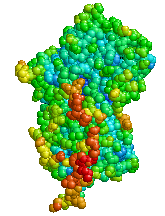
Photo from wikipedia
Objective: The objective of this article is to evaluate the response to 6000 IU oral cholecalciferol (OC) treatment in children with chronic liver disease (CLD) and 25(OH)D deficiency. Methods: This… Click to show full abstract
Objective: The objective of this article is to evaluate the response to 6000 IU oral cholecalciferol (OC) treatment in children with chronic liver disease (CLD) and 25(OH)D deficiency. Methods: This historical cohort included non-transplanted CLD patients younger than 18 years old, which were analyzed for serum 25(OH)D, liver function, bone metabolism, Child-Pugh classification, and anthropometry. Patients with 25(OH)D deficiency (defined as 25(OH)D < 20 ng/mL) who received 6000 IU/day of OC were analyzed pre- and post-intervention, and considered responders if 25(OH)D > 20 ng/mL after at least 60 days. We compared clinical and laboratory data from patients with and without 25(OH)D deficiency, responders and nonresponders. Results: We studied 96 patients, of which 57.2% had biliary atresia. The prevalence of 25(OH)D deficiency was 67.7% (65/96). These patients were younger (P < 0.001), had higher Child-Pugh scores (P < 0.001), higher levels of total bilirubin (TB) (P < 0.001), gamma-glutamyl transferase (P < 0.001), and alkaline phosphatase (P = 0.002), as well as lower levels of phosphorus (P = 0.009) compared with patients without 25(OH)D deficiency. The median treatment length was 126 days (70–307 days). At the end of treatment, we observed a higher median of 25(OH)D (P < 0.001), and lower median of parathyroid hormone (PTH) (P = 0.023). Nine patients (29%) restored 25(OH)D to normal range; they had lower Child-Pugh score (P = 0.001), lower TB levels (P = 0.001), and higher level of phosphorus (P = 0.003) after treatment. Conclusion: Despite an increase in 25(OH)D and decrease in PTH levels, 6000 IU/day of OC was not sufficient to restore 25(OH)D deficiency in most of the patients in this study.
Journal Title: Journal of Pediatric Gastroenterology and Nutrition
Year Published: 2023
Link to full text (if available)
Share on Social Media: Sign Up to like & get
recommendations!